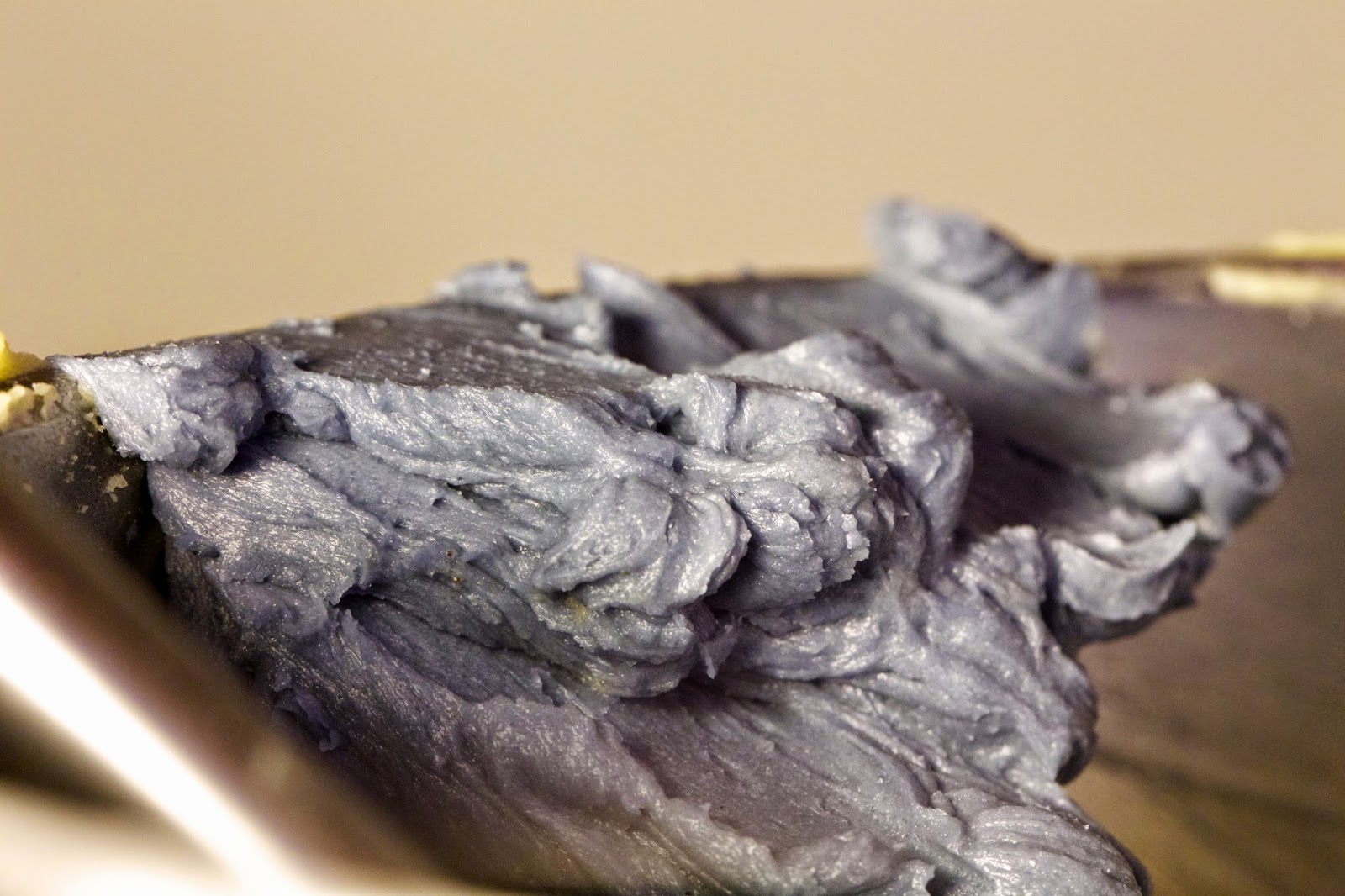When I arrived at the CBS Arena, it was like walking into a dream: the Rush Munro's (ice cream) stand was right by the door, Peta Matthias was on the big screen demonstrating something with okra, and Pic's Peanut Butter was giving away free samples!! Well, 'free' after having paid the entry fee, but I'm not one to look a gift horse in the mouth (whatever that means...).
 |
| The Village Press is a slice of Hawkes Bay, where I grew up :) |
 |
| Peta Matthias on the big screen. |
 |
| Another Hawkes Bay icon! Is my foodie obsession really surprising considering that I grew up in the Fruit Bowl of New Zealand?! |
 |
| The delectable wares of the Lewis Road Creamery, where the best butter on earth is made. True story. |
 |
| Jason Gunn adds a flourish during a cooking challenge - in front of a mouth-watering display of Kenwood K-Mix appliances. |
 |
| Annabelle White co-hosts the cooking display with Jason Gunn. |
Although her icing was a bit soft during the demo, I did pick up some new icing techniques. Aaaaaaannnnnddddd.....
......the recipe for Julie's Best Ever Vanilla Cupcakes!!!
While at The Food Show, I got a text from a friend who was organising a fundraising pub quiz two days' out. Would I or someone I know be willing to do some baking to hand out after the quiz as a thank-you to the attendees? Not one to shirk from a good work (or a challenge!), I asked how many people she was expecting to attend. Oh, 80 plus people...
A no-fail vanilla cupcake recipe was just what I needed! In particular, I was glad to find a flavour-some recipe that didn't involve too many eggs to keep the cost down (two per double-dozen is a decent ratio, I think) - especially if you need to make four batches!!! I didn't have vanilla sugar at the time, so I just used more caster sugar and added an extra teaspoon of vanilla essence for each batch. But I now have a couple of vanilla pods in a sealed container to infuse a quantity of sugar for the next time I make these cupcakes.
I topped the cupcakes with the basic buttercream recipe that I used for this cake recently, flavoured lightly with vanilla essence.
May I present...
Julie Le Clerc's Best-ever Cupcakes
1 & 1/4 cups plain flour, sifted
1 & 1/4 tsp baking powder
1/2 tsp baking soda
3/4 cup caster sugar
1/4 cup vanilla sugar
1/4 cup soft butter or margarine
2 small eggs
pinch of salt
1/4 cup vegetable oil (not olive)
1/3 cup full-fat sour cream or yoghurt
2 tsp vanilla extract
150mL whole milk
maple syrup or sugar syrup to coat
Preheat oven to 175 degrees Celsius. Line 24 standard-sized muffin tin holes with paper cases. [I like to spray-oil my baking cases so that the cupcakes are easy to eat out of them without sticking too much].
Place flour, baking powder, baking soda and both sugars into a bowl. Add butter and stir together/rub in with a wooden spoon or whisk until the butter or margarine is evenly distributed and the mixture looks like fine breadcrumbs. [Julie called this process 'reverse creaming', but it's really similar to when you rub butter into flour when making scones. Of course, I used my miracle whisk...!] Make a well in the centre.
 |
| Rubbing in butter with the miracle whisk |
Pour this wet mixture into the well in the dry ingredients and stir for a minute or two to just combine. The mixture will be fairly thick but you shouldn't see traces of butter.
Lastly, slowly add add the milk, stirring until mixed together (mixture will be quite liquidy).
Transfer the mixture to a jug or cup and pour into paper cases, filling cases until just over half full.
 |
| Obligatory baking-in-oven shot! |
 |
| These cupcakes don't fracture on their tops, which makes them easier to ice! |
 |
| This batch are a little too browned - but doesn't affect the taste. |
 |
| Iced, wrapped and ready to be favours for pub quiz attendees. |




































